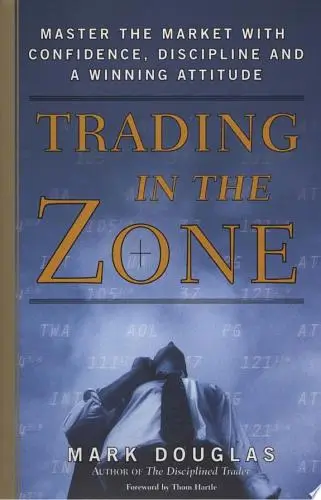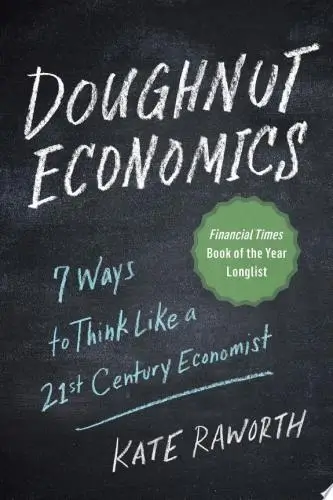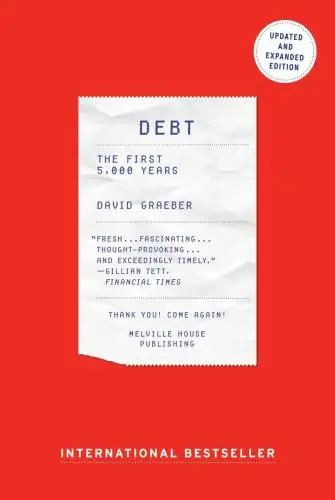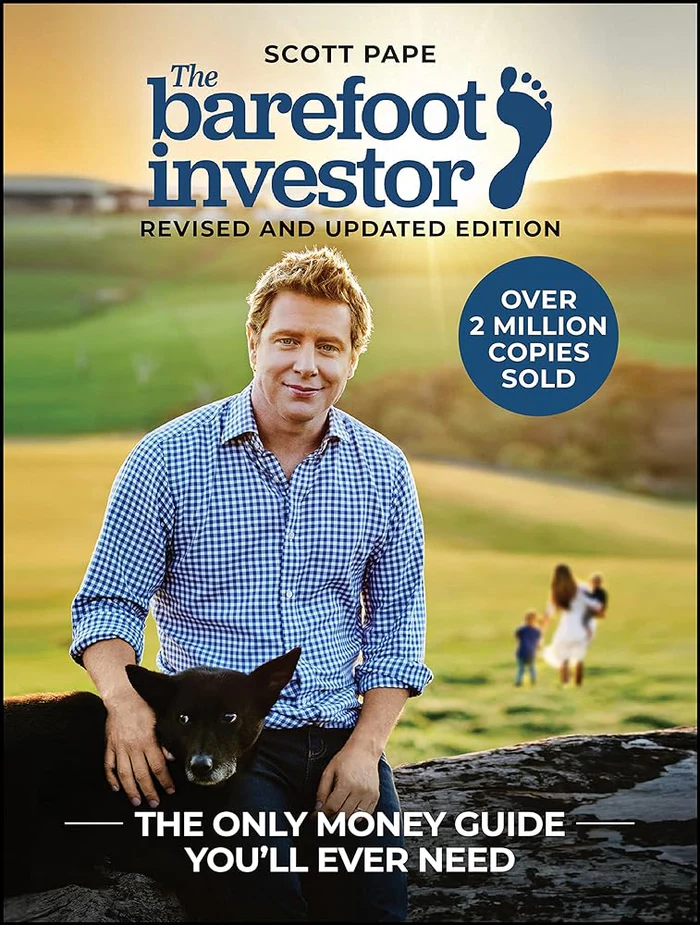MONEY Master the Game
7 Simple Steps to Financial Freedom
What's it about?
MONEY Master the Game by Tony Robbins is a guide aimed at empowering you with strategies to secure financial freedom. Robbins distills insights from interviews with over 50 financial experts, offering you actionable steps to create a personalized investment strategy. Learn about the power of compound interest, how to minimize investment fees, and ways to protect your assets against market volatility. This book equips you with the tools to master your financial destiny, regardless of your current financial situation.
About the Author
Tony Robbins is a motivational speaker, author, and life coach known for his works on personal development, leadership, and financial freedom. His writing style is engaging and practical, emphasizing empowerment and strategies for overcoming obstacles. Notable themes include harnessing the power of belief and creating lasting change.
10 Key Ideas of MONEY Master the Game
Embrace the Power of Compound Interest for Long-term Wealth
Understanding and leveraging compound interest is crucial for building wealth over time.
It's the process where the interest you earn on your savings or investments also earns interest, leading to exponential growth.
By starting early and consistently investing, even small amounts can grow significantly due to the compounding effect.
This principle encourages individuals to save and invest wisely, emphasizing the importance of patience and long-term planning in achieving financial independence.
Learn DeeperStart Saving Now: No matter how small the amount, begin saving a portion of your income immediately. The sooner you start, the more you can leverage the power of compound interest.
Automate Your Savings: Set up automatic transfers to your savings or investment account. This ensures you consistently contribute without having to think about it every month.
Reinvest Your Earnings: Instead of spending the interest or dividends you earn, reinvest them. This is crucial for compounding to truly work its magic over time.
Increase Your Savings Rate Over Time: As your income grows, incrementally increase the amount you save or invest. Even a small percentage increase can have a significant impact due to compounding.
Choose Investments Wisely: Opt for investment vehicles that offer the best potential for growth over time, considering your risk tolerance. Diversify to spread risk and enhance the potential for compound growth.
- Example
If you start saving $100 a month at an annual interest rate of 5%, compounded monthly, from the age of 25, by the time you're 65, you would have saved over $150,000, much of which comes from interest.
- Example
Consider someone who invests $5,000 annually in a retirement account from age 30 to 65 at an average annual return of 7%. By retirement, they would have contributed $175,000 but accumulated over $600,000, showcasing the power of compound interest.
Diversify Your Investment Portfolio to Mitigate Risk
Diversification is a key strategy to manage risk and enhance potential returns across different asset classes.
By spreading investments across various sectors, geographic regions, and asset types, you can reduce the impact of poor performance in any single investment.
This approach helps in smoothing out the volatility in your portfolio, providing a more stable growth trajectory over time.
Diversification ensures that you're not putting all your eggs in one basket, protecting your investments from unforeseen market downturns.
Learn DeeperStart by assessing your current investment portfolio. Identify the types of investments you currently hold and categorize them by asset class, such as stocks, bonds, real estate, or commodities. This will give you a clear starting point to understand how diversified your portfolio already is.
Research and invest in different asset classes. If your portfolio is heavily weighted in one type of asset, consider exploring others. For example, if you have a lot of stocks, look into bonds or real estate investment trusts (REITs) as a way to balance your investments.
Consider geographic diversification. Don't just invest in your home country's markets; look at emerging markets or established markets in other countries. This can protect you against regional economic downturns.
Regularly review and rebalance your portfolio. Over time, some investments may grow faster than others, skewing your original diversification strategy. Periodically rebalancing your portfolio back to your desired allocation can help maintain your diversification strategy.
Use mutual funds or exchange-traded funds (ETFs) for instant diversification. If you're not confident in picking individual stocks or bonds, consider investing in mutual funds or ETFs that offer a mix of assets, providing built-in diversification.
- Example
If you're heavily invested in technology stocks and concerned about sector volatility, you might add bonds or real estate investments to your portfolio. This could involve buying shares in a bond-focused mutual fund or a REIT, which would spread your risk across different sectors.
- Example
An investor primarily holding U.S. stocks might diversify by investing in an international ETF, which holds a basket of non-U.S. stocks. This move can hedge against the risk of a downturn in the U.S. market and capitalize on growth in other regions.
Understand and Minimize Investment Fees to Maximize Returns
Investment fees can significantly erode your returns over time.
Being aware of and minimizing these fees is crucial for maximizing your investment earnings.
This includes management fees, transaction fees, and fund expense ratios.
By choosing low-cost index funds or negotiating better rates, investors can keep more of their hard-earned money working for them.
Understanding the impact of fees on investment performance is essential for making informed decisions and ensuring a higher net return on investments.
Learn DeeperReview Your Investment Fees: Take a closer look at your current investments. This could be your 401(k), IRA, or any mutual funds you own. Look for the expense ratios, which are annual fees as a percentage of your investment, and any other fees you're being charged.
Compare Low-Cost Index Funds: Research low-cost index funds that track the overall market. These funds often have much lower fees compared to actively managed funds. Vanguard, Fidelity, and Schwab are known for their low-cost options.
Negotiate Fees: If you're working with a financial advisor or broker, don't be afraid to negotiate the fees. Ask if there are lower-cost alternatives or if they can reduce their management fee.
Automate to Avoid Transaction Fees: If possible, set up automatic investments to reduce transaction fees. Many platforms offer reduced or no fees for regular investing schedules.
Educate Yourself Continuously: Stay informed about your investments and the market. The more you know, the better decisions you'll make, and the less likely you'll be to incur unnecessary fees.
- Example
If you're invested in a mutual fund with an expense ratio of 1.5% but find a similar index fund with a 0.2% expense ratio, switching could save you 1.3% annually. On a $10,000 investment, that's $130 saved each year.
- Example
By negotiating your financial advisor's management fee from 1% to 0.75%, on a portfolio of $100,000, you would save $250 annually.
Adopt the Mindset of an Investor, Not a Consumer
Shifting your mindset from consumerism to investor mentality is pivotal in achieving financial freedom.
This involves prioritizing saving and investing over spending, and seeing money as a tool for creating wealth rather than just for immediate consumption.
By focusing on accumulating assets that generate income or appreciate over time, individuals can build a solid financial foundation.
This mindset shift encourages disciplined spending, strategic saving, and investing, leading to long-term financial security.
Learn DeeperTrack Your Spending: Start by keeping a detailed record of where your money goes each month. This will help you identify areas where you can cut back on spending and redirect those funds into savings or investments.
Automate Your Savings: Set up automatic transfers from your checking account to your savings or investment accounts. Even a small, consistent amount can grow significantly over time due to compound interest.
Educate Yourself About Investing: Spend time learning about different types of investments (stocks, bonds, real estate, etc.) and how they fit into your overall financial plan. Knowledge is power when it comes to investing.
Set Financial Goals: Define clear, achievable financial goals for the short, medium, and long term. Having specific targets can motivate you to save and invest with purpose.
Live Below Your Means: Adopt a lifestyle that allows you to spend less than you earn. This doesn't mean you have to skimp on everything, but rather make conscious choices that prioritize financial freedom over immediate gratification.
- Example
If you typically spend $5 every weekday on coffee, consider making coffee at home and investing the saved money. Over a year, this could save you over $1,000, which could then be invested in a mutual fund or retirement account.
- Example
Instead of buying a new car with high monthly payments, buy a reliable used car for cash. Invest the difference in what you would have paid monthly into an index fund or other investment vehicle.
Create a Financial Freedom Plan Tailored to Your Goals
A personalized financial freedom plan is essential for setting and achieving your financial goals.
This plan should outline your income, expenses, savings rate, and investment strategy, tailored to your personal aspirations and lifestyle desires.
By setting clear, achievable goals and regularly reviewing your progress, you can adjust your strategy as needed to stay on track.
A well-crafted plan acts as a roadmap, guiding you towards financial independence by making informed decisions aligned with your long-term objectives.
Learn DeeperAssess Your Current Financial Situation: Start by gathering all your financial information. This includes income, debts, expenses, and savings. Understanding where you are now is crucial for planning where you want to be.
Set Specific Financial Goals: Think about what financial freedom means to you. Is it owning a home, retiring early, or traveling the world? Define clear, measurable goals with timelines to keep you motivated and focused.
Create a Budget That Aligns With Your Goals: Allocate portions of your income towards necessities, savings, and investments. Prioritize expenses that bring you closer to your goals and cut back on non-essential spending.
Build an Emergency Fund: Aim to save at least 3-6 months' worth of living expenses. This fund acts as a safety net, protecting your financial plan against unforeseen circumstances.
Invest Wisely: Educate yourself on different investment options and choose those that align with your risk tolerance and time horizon. Consider consulting with a financial advisor to tailor your investment strategy to your goals.
Regularly Review and Adjust Your Plan: Life changes, and so should your financial plan. Regularly review your progress towards your goals and adjust your budget, savings, and investments as necessary.
- Example
Example 1: Sarah wants to buy a house in 5 years. She assesses her finances, sets a down payment goal, creates a budget that includes saving a fixed amount monthly towards her goal, and invests in a high-yield savings account specifically for her house fund.
- Example
Example 2: Mike aims to retire early at 55. He calculates his retirement needs, maximizes his 401(k) contributions, and diversifies his investment portfolio to include stocks, bonds, and real estate. He reviews his retirement plan annually to adjust for market changes and personal circumstances.
Deeper knowledge. Personal growth. Unlocked.
Unlock this book's key ideas and 15M+ more. Learn with quick, impactful summaries.
Read Full SummarySign up and read for free!
MONEY Master the Game Summary: Common Questions
"Remember, information is power. If you do nothing else with the knowledge you gain from this book, you and your family will benefit enormously when you use it to defend yourself from the financial services industry. - Tony Robbins, MONEY Master the Game
Just finished MONEY Master the Game by Tony Robbins, and wow, it was eye-opening! Robbins delves into the world of personal finance, dissecting investment strategies, retirement plans, and the pitfalls of the financial industry. The depth of research and real-life examples kept me engaged throughout, though some sections on complex investment tools left me scratching my head a bit.
If you enjoy books like "Rich Dad Poor Dad" by Robert Kiyosaki or "The Intelligent Investor" by Benjamin Graham, you'll love this comprehensive guide to mastering the game of money. Highly recommend for anyone looking to take control of their financial future.
Experience Personalized Book Summaries, Today!
Discover a new way to gain knowledge, and save time.
Sign up for our 7-day trial now.
No Credit Card Needed

Similar Books

The Art of Spending Money
Morgan Housel
Trading in the Zone
Mark Douglas
Doughnut Economics
Kate Raworth
A study guide for Barbara Ehrenreich's "Nickel and Dimed: On (Not) Getting By in America"
Gale, Cengage Learning
Bitcoin For Dummies
Prypto
Debt
David Graeber
The Barefoot Investor
Scott Pape
Money Has No Value
Samuel A. Chambers
Financial Peace
Dave Ramsey
Capital in the Twenty-First Century
Thomas PikettyTrending Summaries

Peak
Anders Ericsson
Never Split the Difference
Chris Voss
Smart Brevity
Jim VandeHei
The Psychology of Money
Morgan Housel
The First 90 Days
Michael D. Watkins
Atomic Habits
James Clear
Thinking, Fast and Slow
Daniel Kahneman
The Body Keeps the Score
Bessel van der Kolk M.D.
The Power of Regret
Daniel H. Pink
The Compound Effect
Darren HardyNew Books

The Art of Spending Money
Morgan Housel
$100M Offers
Alex Hormozi
A Candle for Kiri
Edna Mae Holm
Principles of Marketing, Global Edition
Gary Armstrong
Serpent Rising: The Kundalini Compendium
Neven Paar
Feeling Is the Secret
Neville Goddard
The 100 Best Business Books of All Time
Jack Covert
My Oxford Year
Julia Whelan
Trading in the Zone
Mark Douglas

